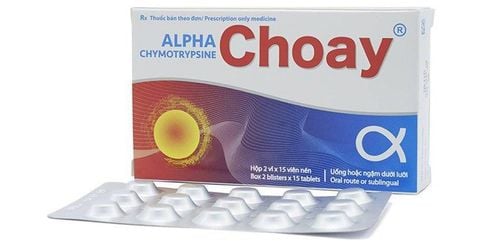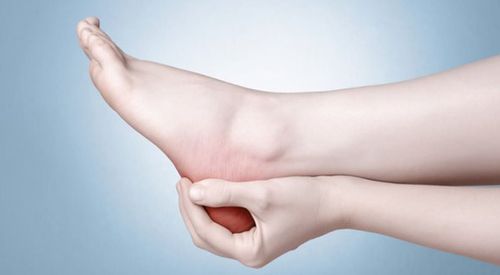This is an automatically translated article.
Prontosan is a wound cleaner containing Polyhexamethylene biguanide and Betaine suitable for use on acute and chronic wounds. Prontosan wound wash solution and Prontosan gel are safe and easy to use, applied to wounds to moisten, disinfect and remove necrotic tissue and biofilm.
1. Uses of Prontosan
Prontosan wound wash solution has a cleansing effect, helping to remove barriers to wound healing.
Chronic skin wounds are often covered with scabs, necrotic tissue and biofilm; These coatings make the wound take longer to heal. Acute wounds are often contaminated with foreign bodies and microorganisms, which requires proper cleaning. Wound infectious agents, if not removed, can form biofilms that affect wound healing, leading to complications such as infection.
Prontosan is the ideal solution to prevent biofilm formation, has two main ingredients:
Polyhexamethylene biguanide (PHMB), antimicrobial agent (0.1%) Betaine, surfactant (0.1). %) Polyhexamethylene Biguanide is a widely used synthetic antimicrobial agent. Polyhexamethylene Biguanide is thought to work by disrupting the lipopolysaccharide layer of bacterial cell membranes to kill bacteria. At the same time, the active ingredient Polyhexamethylene affects proteins, inactivating them and preventing DNA synthesis. This makes it easy to kill microorganisms.
Betadine surfactant with low surface tension easily penetrates deep into the tissue, helping to clean, remove cell debris, dirt, biofilm. As a result, the drug Prontosan adheres better, penetrates deeper and increases the antibacterial effect. Besides, Betadine also has the ability to disrupt biofilms, helping to clean wounds more.
2. Is Prontosan safe?
Prontosan inhibits bacterial proliferation at the lowest concentrations and is less cytotoxic at high concentrations. It had no adverse effects on fibroblast proliferation (cells important for wound healing) at any concentration.
Prontosan wound wash solution is hypoallergenic and can be used on sensitive or irritated skin. Both Prontosan Wound Wash and Prontosan Gel are sterile, colorless, and odorless products.
Unlike systemic antibiotics, Prontosan does not interfere with the microflora of other parts of the body, such as the intestines. Prontosan can be used as an alternative to prophylactic antibiotics in postoperative wounds to prevent surgical site infection.
3. When is Prontosan indicated?
The main indication of Prontosan wound cleaning solution is to clean, disinfect, moisturize, assist in the removal of excess secretions and dirt, and help prevent the formation of biofilms. Prontosan is indicated in the following cases:
Used to clean, disinfect and moisten: Acute, infectious and non-infectious wounds: Traumatic wounds: lacerations, bites, wounds cuts on the skin or crushed wounds; postoperative wound; Chronic wounds, infectious and non-infectious: pressure ulcers, diabetic ulcers, venous ulcers; 1st and 2nd degree burns; Chemical burns; Wounds after radiation therapy; Fistula and abscess; Inlet of a ureteral catheter, PEG/PEJ tube or drainage tube; The skin around the colostomy opening. To clean and wash the wound during surgery. For instillation of wound irrigation solution in combination with negative pressure aspiration therapy. To moisten the hardened dressing before removing.
4. When is Prontosan contraindicated?
Prontosan should not be used in patients with known or suspected allergy to Betaine, Polyhexamethylene biguanide or any of the product's ingredients. Contraindicated for use on the central nervous system or meninges, middle or inner ear, eyes. Contraindicated for use on hyaline cartilage during surgery. If Prontosan comes into direct contact with hyaline cartilage, it should immediately be washed with Ringer's solution or normal physiological saline. Prontosan solution should not be combined with other wound cleaners or ointments such as anionic tensides, cleaning soaps, ointments, oils, enzymes. These substances should be completely removed from the wound before applying Prontosan.
5. Common Prontosan Usage
It is best to use Prontosan solution to wash the wound to clean the wound before treating with Prontosan Gel. If necessary, the Prontosan solution can be warmed to body temperature before use. Use Prontosan wound wash solution undiluted.
Old wound dressings often harden and stick to the wound surface. Removing this dressing can damage the bottom layer of the wound, slowing down the healing process. You can use Prontosan wound cleaning solution to wet the old dressing until it can be removed easily.
The entire wound and the surrounding skin should be thoroughly cleaned with Prontosan wound washing solution to remove surface debris and disinfect.
For non-serious and acute wounds, it may be enough to simply use a rinsed solution of Prontosan.
For wounds on large or hard-to-reach areas, it is best to use a bandage moistened with Prontosan solution on the wound for about 15 minutes. You can then gently wipe the wound and surrounding skin with a Prontosan-impregnated gauze dressing, which makes it easier to remove necrotic tissue, surface contaminants, and biofilm.
Regular use of Prontosan wound wash solution is required to achieve and maintain visible clean wounds.
You can probably just use Prontosan solution to wash the wound, but for best results, you should use it together with Prontosan Gel. This allows the wound to continue to be cleaned and disinfected, and keeps the wound moist until the next dressing change. Prontosan Gel can be applied directly to the wound, filling the wound cavity, or a gauze dressing can be moistened with the gel prior to application.
6. Some notes when using Prontosan
At first, it is best to use Prontosan every day. Prontosan wound wash solution is used primarily to remove surface debris. Therefore, Prontosan can be used for an extended period as a prophylactic treatment or until there are signs of healing and no further signs of local infection.
Pregnant women: There is currently no evidence of embryotoxicity or mutations related to the ingredients in Prontosan wound wash solution. However, there is still a lack of clinical experience on the use of the solution in this population, use only after consulting a doctor.
Lactation: Because there is no systemic reabsorption of Polihexanide, it is unlikely to pass into breast milk. There is currently a lack of clinical experience and trials in lactating women, so Prontosan solution should be used after careful medical consultation.
Infants and young children: Prontosan wound wash solution is used selectively and under close supervision by medical personnel for infants and young children.
Prontosan wound wash solution is a preservative product and has a shelf life of 8 weeks after opening. Close the cap immediately after use to avoid contamination, especially to protect the top of the bottle. If the solution bottle comes into direct contact with the wound or becomes infected, the solution must be discarded.
Prontosan is a safe and effective method of assisting in wound cleansing. Due to its good clinical safety, minimal cytotoxicity, and no evidence of bacterial resistance to its components, Prontosan is widely used in acute wound cleaning and disinfection and chronic, after surgery.
Please dial HOTLINE for more information or register for an appointment HERE. Download MyVinmec app to make appointments faster and to manage your bookings easily.













